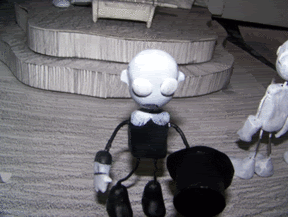Elizabeth Grosz, whom I believe is the writer of the essay on the Chaos Theory and Art, investigates art through philosophy rather than through the conventional methods of historical analysis or criticism. It was actually quite the insightful little essay, and it provided a perspective on art that I had yet to grasp.
I've known for some time that because other people don't necessarily know what you're on about, they'll look at your work and probably take it some way you didn't mean it to be taken. What I didn't grasp until now however are the roots of these sensations, or the part that sensation and art play on the human consciousness all at once. Because people are pretty much sophisticated animals, if you want to look at it in a neutral way, they are influenced by sensations that are not just felt by one and given off by another, but perceived so simultaneously that there's no real proof where the act of sense and sensation begin. Whenever we perceive something, the first thing that runs through us is some inexplicable energy caused by what was seen and the seer's interpretation colliding. Art starts off as a sensation rather than a concept.
Organic beings of a conscious mind show off an appreciation for sensation, art, beauty, and the like the moment they are ready for sexual selection. Now is when preference develops and bonds are formed with chaotic elements in order to shape something new and unique to capture attentions. Without this, life could have never evolved. It is in our very natures to track and trace art because it commits a similar act. It creates a frame, or destroys another, all in attempts to generate a response from the onlooker. The act of making art is the act of trying to form an 'other' out of chaos and nature. It can evoke new sensations never experienced as it creates new planes within its borders.
Or at least that's what I understood.
It's all important to keep in mind. Because this essay doesn't bring up any specific artwork, it lets the reader know that this applies to all forms, all classes, and all kinds of art. Whether it's good or bad, still or moving, this or that--it all harbors the same potential to generate unique sensations.
So, some questions:
1. If organic beings, conscious and all, are able to have sensations and appreciations for art once they're ready for sexual selection, then what of children? Are they ready much younger than we'd initially imagine? Because kids can draw and they can appreciate are too. They develop preferences as early as the age of one and a half.
2. What about the pieces we look at that don't stick? The ones that we pass by with maybe a glance in their directions before moving on. Have they failed to evoke a sensation? Have they failed at their tasks? What do they become?
3. What is the point of trying to make sense of the chaos around us if we ourselves are born of it and practically made of it, whilst living in it and among it?
Monday, August 9, 2010
Subscribe to:
Post Comments (Atom)

No comments:
Post a Comment